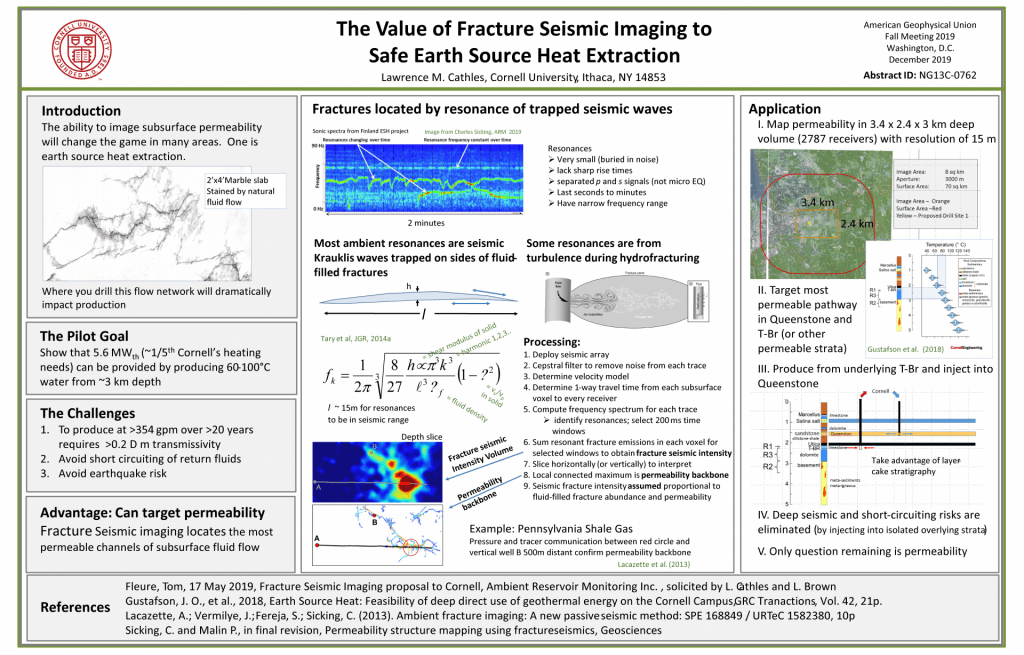To produce the desired amount of heat from geothermally heated water requires the flow of adequate water out of the geological reservoirs and into production pipes. Engineering analyses can calculate the minimum necessary flow over long time periods to meet either the heat production needs of a demonstration-project or to fulfill the full University needs. To make that estimation of the necessary flow relies on several assumptions about the rocks in the subsurface, involving both the temperature of the rock and the capacity of water to be pumped out of the rock. Until a borehole exists for the Earth Source Heat project and a suite of tests are performed, we cannot determine whether the assumptions are valid. Consequently, the project involves a large amount of technical uncertainty — can sufficient hot water be extracted over many years duration?
Professor Emeritus Larry Cathles has analyzed the subsurface flow of water, using traditional assumptions and methods of the field of hydrogeology. He begins with a set of up to date estimates of the amount of long-term heat production needed, utilizes available information about the hydrological conditions of the rocks, and calculates the hydrological impacts of pumping fluid out of the rocks. Given those results and in the interest of minimizing risks, he recommends one possible design of production and injection wells.
https://hdl.handle.net/1813/69956
This analysis illustrates why producing water from the subsurface rocks of Cornell is a technical challenge. In the interest of lowering the magnitude of challenge, Professor Cathles continues with the recommendation for a geophysical experiment that could be deployed to search for the locations of mobile fluids in the subsurface. He also presented the rationale for this experiment in a poster presented at the 2019 American Geophysical Union convention, which is reproduced below.

